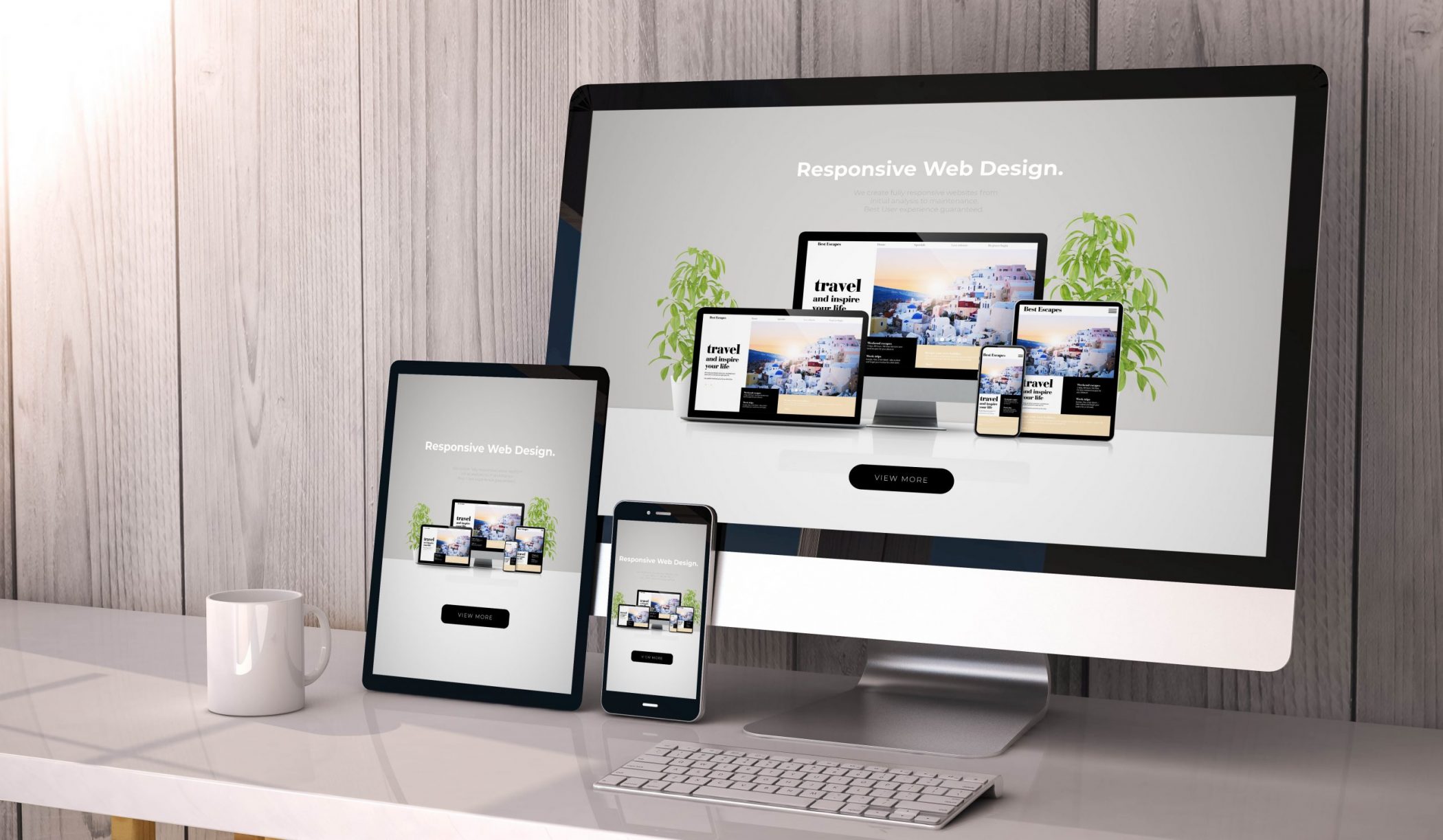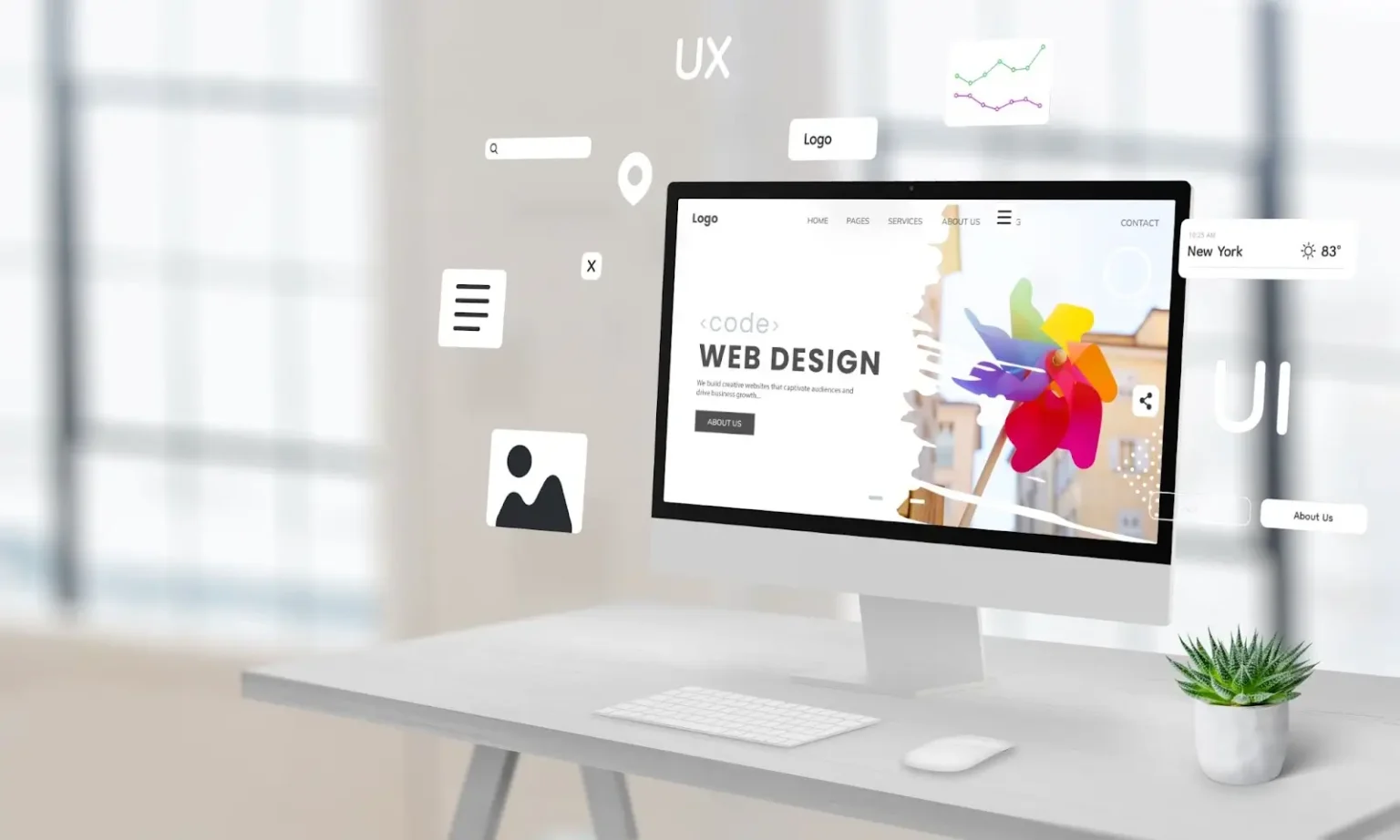Proven insights on creating engaging visuals from an agency for web design
The Value of User Experience in Efficient Web Design Techniques
User experience (UX) acts as a cornerstone in effective web design strategies. It forms how individuals communicate with a site, affecting their complete satisfaction and probability of returning. A well-designed UX can boost engagement with user-friendly navigation and responsive layouts. Nevertheless, forgeting these aspects might cause aggravation and boosted bounce prices. Comprehending the ins and outs of UX is crucial for designers intending to produce compelling electronic experiences that reverberate with varied target markets. What variables really drive successful user involvement?
Understanding User Experience and Its Effect on Layout
User experience (UX) is typically regarded as a simple facet of internet design, it essentially forms just how individuals communicate with a web site. UX incorporates all facets of the user's communication, including usability, access, and general fulfillment. A positive UX fosters involvement, encouraging customers to discover the site and return in the future. Conversely, an unfavorable experience can bring about disappointment, leading to high bounce rates and shed opportunities for conversion.
Layout components like navigating, layout, and material organization play important functions in forming this experience. Efficient UX design expects user needs and preferences, ensuring that information is conveniently available and visually enticing. Additionally, understanding user behavior through analytics can supply useful insights, notifying design choices that boost use. Inevitably, a comprehensive understanding of UX allows developers to produce websites that not only attract individuals yet additionally advertise meaningful communications that align with organization goals and user expectations.
Trick Concepts of Reliable User Experience
Efficient user experience hinges on numerous crucial principles that enhance site functionality and engagement. Intuitive navigation layout, receptive design essentials, and the value of aesthetic power structure are vital elements that contribute to a smooth communication between individuals and web content. Recognizing these concepts permits developers to create even more obtainable and easy to use digital environments.
Intuitive Navigating Style
User-friendly navigation style serves as a critical portal to their general experience when individuals run into a website. Reliable navigating allows individuals to easily find the info they look for, boosting their communication with the site. Trick principles consist of clear labeling, sensible organization, and constant placement of navigation aspects. Labels need to be straightforward, allowing individuals to forecast the material they will certainly discover. A well-structured pecking order aids users understand the partnership between various sections, assisting them through the internet site seamlessly. Additionally, receptive menus and quickly available links add to a fluid experience throughout gadgets. By prioritizing intuitive navigation, developers can considerably lower user irritation and increase engagement, inevitably cultivating a favorable understanding of the internet site and its web content.
Receptive Design Essentials
A well-structured navigating system normally brings about the need for a responsive design, which is important in today's varied electronic landscape. A responsive format warranties that websites feature seamlessly throughout different gadgets, including desktop computers, smart devices, and tablet computers. This adaptability improves user experience by permitting material to be easily available and aesthetically coherent, no matter of display size. Secret concepts of receptive design consist of liquid grids, versatile pictures, and media inquiries, which facilitate perfect watching. In addition, focusing on touch-friendly aspects enhances communication on mobile tools. By applying a responsive format, designers can fit customers' requirements, minimize bounce rates, and boost involvement. Eventually, a well-executed receptive layout fosters a positive user experience, urging visitors to explore the website even more.
Aesthetic Pecking Order Relevance
Aesthetic power structure plays an important role in leading users via a web site, ensuring that crucial details records their attention initially. By tactically using size, color, comparison, and spacing, developers can create a clear pathway for users to comply with. Bigger elements commonly draw the eye, showing their value, while contrasting shades can highlight calls to activity. Additionally, consistent placement and group of relevant content improve comprehension, making navigation intuitive. Effective use of aesthetic hierarchy not just boosts functionality yet likewise sustains the total visual of the site, promoting a positive user experience. When individuals can easily determine one of the most critical info, they are most likely to involve with the web content, resulting in boosted fulfillment and interaction with the site.
The Function of Functionality in Web Design
Use plays a crucial function in web design, specifically through navigation simplicity and adherence to accessibility requirements. Effective navigating boosts user satisfaction by permitting visitors to locate info promptly and with ease. On the other hand, conference availability requirements ensures that all users, despite their capabilities, can successfully connect with the site.
Navigating Simplicity
Simpleness in navigating stands as a keystone of efficient web design, significantly affecting user experience. A structured navigating system enables customers to locate info rapidly and without effort, reducing disappointment and boosting satisfaction. Clear labeling and rational framework are necessary elements, leading individuals easily with the internet site. Repetitive web links or excessively intricate menus can confuse individuals, resulting in boosted bounce prices. Additionally, mobile responsiveness should be taken into consideration, ensuring navigation remains straightforward across tools. Focusing on important web pages and decreasing clutter even more supports user involvement. Reliable navigating not only promotes a favorable experience however likewise encourages customers to explore the site much more thoroughly, ultimately leading to greater conversion prices. Hereof, navigating simpleness acts as an essential variable in the total efficiency of web design strategies.
Accessibility Standards
User involvement is significantly enhanced when websites stick to ease of access criteria, ensuring that all individuals, regardless of their abilities, can browse and connect successfully. Conformity with view it now these requirements not just widens the target market but also boosts general user complete satisfaction. Easily accessible style incorporates attributes such as text alternatives for images, key-board navigation, and enough color comparison, which promote usage by people with specials needs. In enhancement, executing these standards can positively impact seo (SEARCH ENGINE OPTIMIZATION) by improving site structure and clearness. As web design develops, prioritizing ease of access becomes crucial in fostering an inclusive digital environment. By accepting these requirements, designers add to a much more fair web, inevitably driving user loyalty and engagement.
Value of Responsive Layout for User Engagement
As customers progressively access internet sites through a variety of gadgets, the relevance of receptive layout comes to be critical for involving users properly. Responsive style guarantees that a web site adapts flawlessly to different screen dimensions, providing an optimal viewing experience despite the gadget utilized. This adaptability boosts user involvement by helping with less complicated navigating and communication with web content.
When individuals encounter a website that is responsive, they are extra most likely to remain much longer, discover even more, and return in the future. A properly designed responsive design lessens the disappointment typically related to zooming and scrolling on smaller screens, therefore decreasing bounce rates. In addition, responsive style can favorably impact online search engine rankings, as search engines prioritize mobile-friendly websites. In today's electronic landscape, where mobile use remains to climb, carrying out receptive layout is not simply beneficial, yet necessary for maintaining user involvement and ensuring a favorable experience throughout all gadgets.
Enhancing Load Times for Better User Fulfillment

To enhance load times, internet designers must prioritize maximizing photos, leveraging browser caching, and minimizing HTTP demands. In addition, utilizing Content Shipment Networks (CDNs) can accelerate content distribution by distributing it across numerous geographical places. Enhancing code, such as pressing CSS and JavaScript files, better adds to faster filling speeds.
Eventually, a commitment to boosting load times not only improves user contentment yet additionally enhances brand loyalty and improves the possibility of repeat sees. A swift, seamless experience is crucial for maintaining customers and fostering favorable interactions.
The Impact of Visual Pecking Order on User Interaction
Visual power structure acts as a crucial aspect in directing user communication on a website. By arranging material in a manner that focuses on info visually, designers can affect exactly how individuals navigate and engage with a website. This pecking order is established with various style strategies, including dimension, spacing, comparison, and color. For instance, larger typefaces or vibrant shades attract attention to critical elements, such as phone call to activity or headlines, while restrained colors and smaller typefaces can indicate secondary information.
Reliable visual hierarchy assists users rapidly recognize what Going Here is essential, minimizing cognitive load and improving usability. It enables instinctive navigation, making it easier for individuals to discover what they require without disappointment. As users communicate with a site, a well-structured visual power structure cultivates a much more enjoyable experience, ultimately bring about higher involvement and conversion rates. Developers should prioritize these principles to produce an user-centered and effective internet environment.
Determining User Experience: Devices and Techniques

Often Asked Inquiries
How Can I Improve My Internet site's User Experience on a Spending plan?
To enhance a site's user experience on a budget, one can enhance page load speed, streamline navigation, apply receptive style, enhance material clarity, and gather user comments for continual refinements, making certain an enjoyable visitor experience.
What Prevail User Experience Mistakes to Avoid in Web Design?
Usual user experience sites blunders in web design consist of chaotic designs, poor navigation, slow-moving loading times, lack of mobile responsiveness, neglecting ease of access, irregular branding, and falling short to prioritize user comments - agency for web design. Each can significantly impede general site effectiveness
How Usually Should I Update My Website for Better User Experience?
Websites need to be upgraded frequently, preferably every few months, to preserve suitable user experience. Regular updates assist address usability concerns, freshen content, and adapt to transforming user requirements, ensuring the website continues to be appropriate and appealing.

Can User Experience Influence Search Engine Optimization Rankings on My Site?
User experience can greatly influence SEO rankings, as internet search engine prioritize websites that supply seamless navigation, quick loading times, and interesting web content. A positive user experience can cause lower bounce prices and higher search visibility.
What Function Does Availability Play in User Experience Design?
Accessibility plays a vital role in user experience design by ensuring that all individuals, regardless of capacities, can navigate and interact with a website properly. This inclusivity boosts total contentment and engagement among varied customers.
User experience (UX) is typically regarded as a simple facet of internet style, it essentially forms exactly how individuals engage with a site. User interaction is substantially boosted when internet sites stick to accessibility criteria, guaranteeing that all users, regardless of their capacities, can navigate and connect effectively. Determining user experience (UX) is essential for recognizing how effectively a web site fulfills the needs of its customers. In addition, use testing, where genuine customers browse the website while onlookers keep in mind problems, offers straight responses on user experience. Common user experience mistakes in internet design include messy formats, inadequate navigating, sluggish packing times, absence of mobile responsiveness, disregarding ease of access, irregular branding, and failing to focus on user responses.